
Watching Daniela Moroz and Team USA at the Paris Olympics
Sailing conditions in Marseille, France, haven’t disappointed in the least — they have provided all the Olympic Sailing classes with challenging and visually exciting races in the first week of competition. As the first half of the fleets completed their medal races, it was “business as usual” yesterday, as the remaining six classes began their races in Week Two with steady breezes, waves and a little more than just “walleye chop.”
The highlight for Team USA and California so far has been Hans Henken and Ian Barrows winning a well-deserved bronze medal on their 49er Skiff.
Sunday was the first day for Daniela Moroz as Kite Sailing makes its Olympic Games debut.
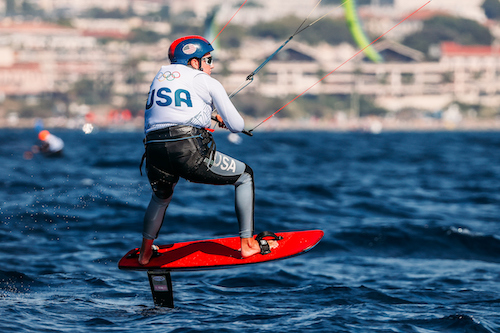
Moroz is from Lafayette Park and is a four-time Rolex Yachtswoman of the Year and a six-time Formula Kite world champion.
“Wow, what a day! It was a very tricky race day, very shifty & the wind was super up & down. I’m really happy to put some solid scores on the board,” Moroz wrote on her Instagram page. “My speed feels really good & my racing is getting sharper with each race.”
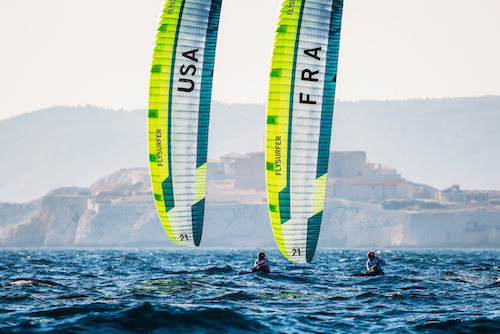
“It felt super good to finish off the day with a bullet, especially after being in the top 2 spots a few times & crashing earlier on,” Moroz continued. “I am focusing on improving every race & having lots of fun out there!”
Moroz took the tricky conditions in stride, shaking off the pre-regatta jitters to put up a very solid scoreline of 7-3-4-1. She ended the day on a high note, winning the last race before heading back to the beach.
“Overall my racing improved over the day, which I was happy with,” Moroz said. “I got out the jitters; it’s almost like the first day of school jitters, but it’s the first day of the Olympics. I got those out of the way.”
“It’s super cool to see my family, it’s really good energy and special to showcase the sport I love so much on a big stage,” she continued. “The lead up in the last week was really tough as we weren’t able to train while other fleets were racing, but it was super cool to watch my teammates sail their medal races.
“Watching my teammates win a bronze medal was a huge boost and it made me think, ‘if they can win a medal so can I.’ It was great for them and great for the larger program.”
Moroz had a second-place finish in today’s race before the schedule was abandoned due to lack of wind.
The Mixed Dinghy (470) powered through light breeze and fluky conditions paired with leftover ocean swell from yesterday’s mistral on the Bay of Marseille. Team USA athletes Stu McNay (Providence, RI) and Lara Dallman-Weiss (White Bear Lake, MN) stayed in touch with the fleet through the difficult conditions, scoring 11-6 in the day’s two races, which landed them in 12th overall for their third day of competition.
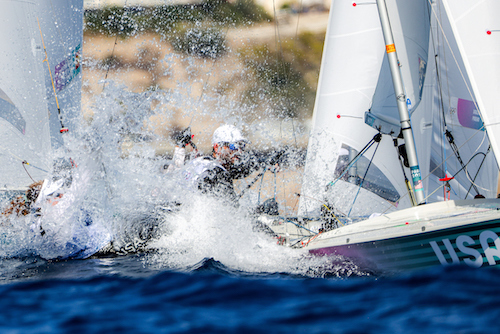
“We had to have our wind shift noses up and alert,” McNay noted. “We were rolling with the punches as best we could. We had some ups, had some downs, but I’m really proud of how we sailed and we live to fight another day!”
There are two days of regular racing left in the Mixed Dinghy, where McNay and Dallman-Weiss will fight to make the top 10 in order to qualify for the medal race on August 7. Given the work they have done to date, don’t rule them out.
Erika Reineke, strategist for SailGP’s Team USA, had a day of opposites in the Women’s Dinghy (ILCA 6). She pushed the starting line in race 7, resulting in a BFD, a black flag disqualification. Hungry for more, Reineke got a top-tier pin start in the day’s second race, using her speed to stay ahead of the fleet and finishing second behind Hungary’s Maria Erdi.
The late afternoon breeze saw upwind foiling conditions for the Mixed Multihull (Nacra 17). Team USA’s Sarah Newberry Moore (Miami, FL) and David Liebenberg (Richmond, CA) scored 14, 13, 16 over the day’s three races as they struggled to make inroads into the top 10.
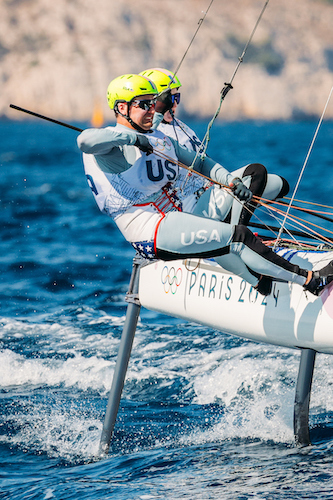
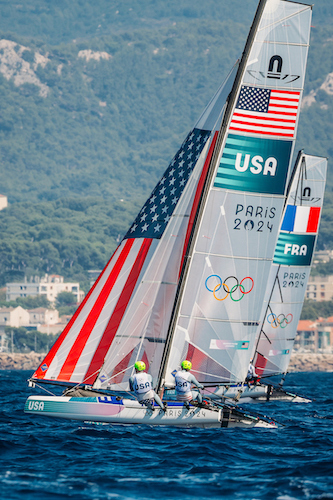
The Sailing World Mourns the Loss of Legendary Cruiser Pam Wall
Pioneering sailor, circumnavigator, and well-known cruising lecturer Pam Wall passed away on Friday at age 80. An outpouring of love, gratitude and remembrances has swept through the internet over the weekend for ‘Grandma Ocean’.
“Pam was a legendary sailor from a generation of legendary sailors, the OG ‘strong woman at sea’ figure that has so inspired my wife, Mia, and others,” wrote Andy Schell in Sail. “Pam grew up sailing on her father’s racing boat on Lake Michigan. Later, while living in Florida, she was swept off her feet by a strapping Australian solo sailor named Andy Wall who had big cruising plans.”
Pam and Andy would go on to have two children, Samantha and Jamie, who they raised while circumnavigating the globe aboard the iconic Freya 39 ocean racer Kandarik — Pam kept the boat “in perfect condition on her backyard dock in a canal in Fort Lauderdale until the day she died,” Schell wrote.
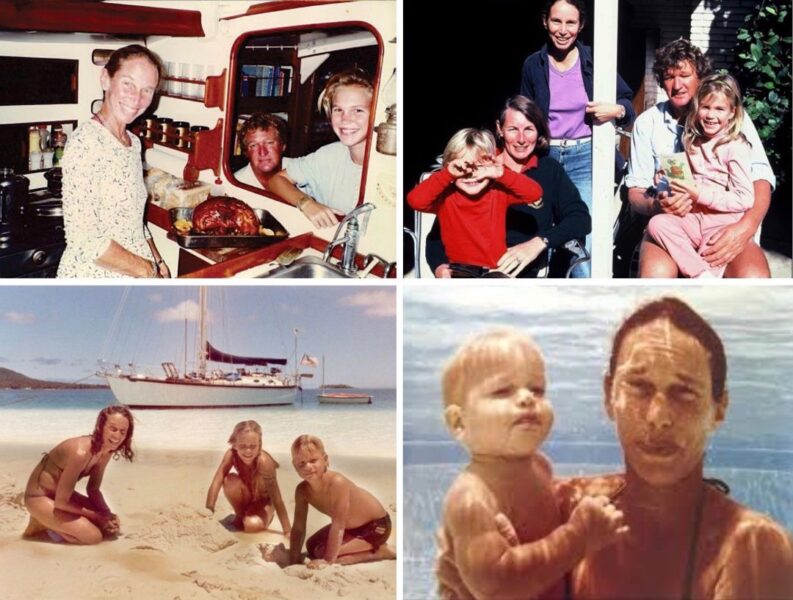
“Pam’s life was at once tragic and inspirational. She lost Samantha and Andy to cancer in quick succession yet remained one of the most passionate and positive people I’d ever met. Pam always reminded me of my own mom, who I lost to cancer in 2012, and became a kind of Grandma Ocean to Mia and myself, and later to our son, Axel.
“But we weren’t unique. Pam’s family became the sailing community, and she took many a young cruiser under her wing. She worked together with West Marine for years helping cruisers outfit their boats for long-distance voyaging and continued to give lectures and share her stories into her late 70s.”
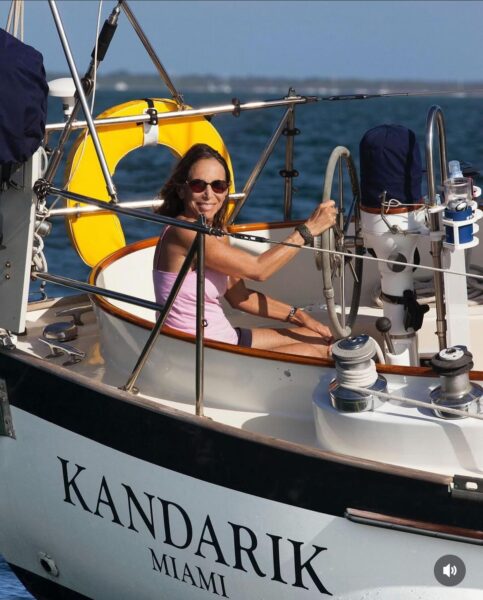
“Pam Wall was a friend to me and so many others in the sailing world. She brought so much joy and light to the world with her continuously positive outlook and wonderful stories. The world will miss you, Pam, as will I,” wrote our friend Ben Shaw. “Rest in peace, thank you for the inspiration,” write our friends Quincy Cummings and Mitch Andrus of QM Travels.
Did you know Pam Wall? Did you attend one of her lectures? Please comment below, or email us here.
Stop Spending Your Days Off in the Engine Room and Start Sailing More
Our electric propulsion systems are designed by boaters with reliability and retrofitting in mind. We have a variety of marine grade LiFePO4 batteries, motor sizes, and the best prop for maximum regen. capabilities. Our unique custom display has an adjustable regen. function and provides the sailor with loads of performance data.
We have an install team in the SF Bay Area. Reach out for a FREE boat report and video consult via our website! www.powerflowmarine.com.
Hurricane Debby and Pacific Ocean Hurricanes
The hurricane season is well underway. Hurricane Debby has made landfall as a Category 1 hurricane with 80-mph winds hitting the northeastern corner’s Big Bend region of Florida’s Gulf Coast. According to the National Hurricane Center the storm will bring a six- to 10-ft storm surge and heavy rainfall along the coast before crossing to Georgia and the Carolinas, where they expect more storm surge and flooding from the rain. There is very little tide in these regions, so most docks are not built to rise and fall, though 10 feet above “normal” would likely overwhelm any dock arrangements.
According to CNN, Hurricane Debby made landfall just nine miles from where Hurricane Idalia landed last year.
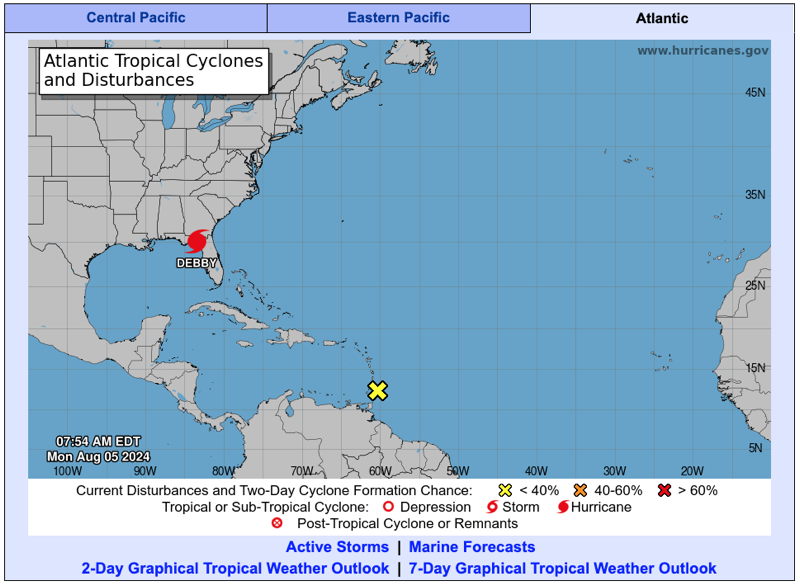
While Debby is landing in Florida, another tropical depression is crossing the Windward Islands near the Grenadines, which were recently ravaged by Hurricane Beryl. NOAA will be keeping an eye on this, hoping it won’t turn into a hurricane as it travels the warm waters of the western Caribbean.
Weather like this reminds us how much we appreciate NOAA and what would happen under privatization as proposed under Project 2025. NBC Bay Area reported that Saildrone in Alameda has one of its autonomous drones sailing in Hurricane Debby to help researchers better understand and forecast the storms. See the NBC report here.

Meanwhile, the National Hurricane Center’s map of the Pacific makes it clear why boats don’t head from the West Coast to the Marquesas at this time of year. There are four named storms, Carlotta, Daniel, Emilia and Fabio, all to the west of Mexico with their projected paths showing them likely to continue heading harmlessly westward.
As we learned once again last year, things can change quickly. In the current issue of Latitude 38, Tim Henry wrote about the Acapulco Yacht Club’s continuing recovery from Hurricane Odile after it strengthened from a tropical storm to a Category 5 hurricane less than 24 hours before hitting Acapulco.
The Wisdom and Experience of Tony English
When Tony English started sailing in 1960, he was 10 years old. His parents kept a boat in Horseshoe Cove, under the North Tower of the Golden Gate Bridge. Tony and a pal sailed a wooden El Toro. “Our instructions were, ‘Don’t leave the harbor.’ One day we decided we’re gonna sneak out and see what happens. We sailed out of the harbor and got hit by a blaster and knocked over. We’re drifting on the ebb, heading for Hawaii.” The kids’ dads took out a boat and rescued them and the El Toro. The other boy’s father said, “This boat stays on the dock for the next month.”
In 1978, Tony and his wife Linda bought a derelict Piver 25 trimaran in San Leandro and spent three months restoring it. They found space for the boat in Pittsburg. “We already had one child. In ’79, our second was conceived. We said, ‘Let’s spend a couple of weeks in the Delta before our next daughter is born.’ We took it up to the Meadows. It didn’t perform very well. I got hold of Norm Cross, the designer of Cross trimarans. We designed a fin keel that worked out great.” They used a Moore 24 rudder as a template for the keel.
Tony raced in the J/24 fleet for about eight years, at a time when 30 boats were on the line. He taught in Richmond Yacht Club’s junior program, starting with beginners in El Toros, helping kids get comfortable sailing around buoys. “The next three years were intermediates with Mike Schaumberg. Mike’s job was to make things fun. My job was to be the disciplinarian. I was probably the softest disciplinarian ever. I would cruise up next to the kid that Mike was having trouble with. We would sit and talk for a couple of minutes, and then I’d let them get back into it.”
Later, Simon Bell recruited him to help teach the Laser kids. “Simon said, ‘The Turkey Day Regatta is coming up in Southern California. How are we going to deal with the kids here?’ I said, ‘Why don’t we take them with us?’ The club had a trailer we could get eight Lasers on. Simon’s trailer would carry his and another boat, so we had room for nine kids. We would convince one of the parents to tow the Laser trailer down, and I would tow a coach boat. We would rent a house. The kids had to cook dinner, clean up, take care of each other’s boats. We made sure they stayed segregated — boys and girls — because these are teenagers with raging hormones. When we left the harbor to go to the starting area, they would hook up on a tow line, and there’s me as the mother duck and all these little ducklings behind me. I really enjoyed that. We would have a debrief between each race. It was a great learning experience for them. And me.”
Tony left the junior program to devote time to racing with Dennis Surtees on the Antrim 27 Abracadabra, an intense program. “Never mind the national championships that we won, it was a great crew. Everything clicked. Even when we didn’t want to win, we won. In one series, we didn’t have to sail the last race, but we went out anyway. Dennis said, ‘Let’s stay out of everybody’s way and let somebody else win.’ We rounded the weather mark first. I don’t think we set a kite. We went to the bottom mark and back to the weather mark, still in first. Never figured out how that happened.”
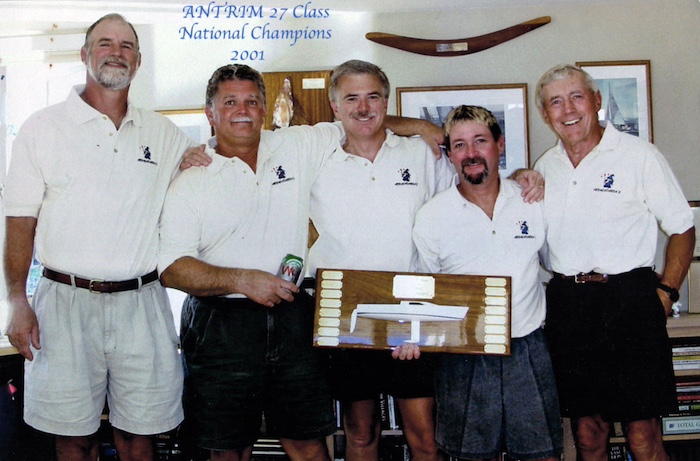
One year, Tony crewed in the Newport to Cabo Race on another Antrim 27, ET, with Todd Hedin, Jim Antrim and John Liebenberg. One night when Tony was driving, he asked Jim, the navigator, “Do you know where in the world we’re at?” Jim said, “We’re in the middle of the frickin’ ocean.” Five minutes later, Jim popped up and said, “Look at the horizon.”
“This is the blackest night I’ve ever seen,” says Tony. “You could pick out a few stars. Jim said, ‘See in front of us where there’s no stars? We need to jibe.’ ‘Why?’ ‘Because that’s an island.’ We were headed straight at Guadalupe Island. If we hadn’t jibed, we would have run right into it. Guadalupe is 200 miles offshore. Everybody else was, like, 50 miles offshore.”
Stop at The Marina at Ensenada Cruiseport on Your Trip South
Walking distance to downtown Ensenada. A modern, safe marina protected by two break waters for a quiet stay. Reserve Now! Toll Free (877) 219-5822 marina.hutchisonportsecv.com.


